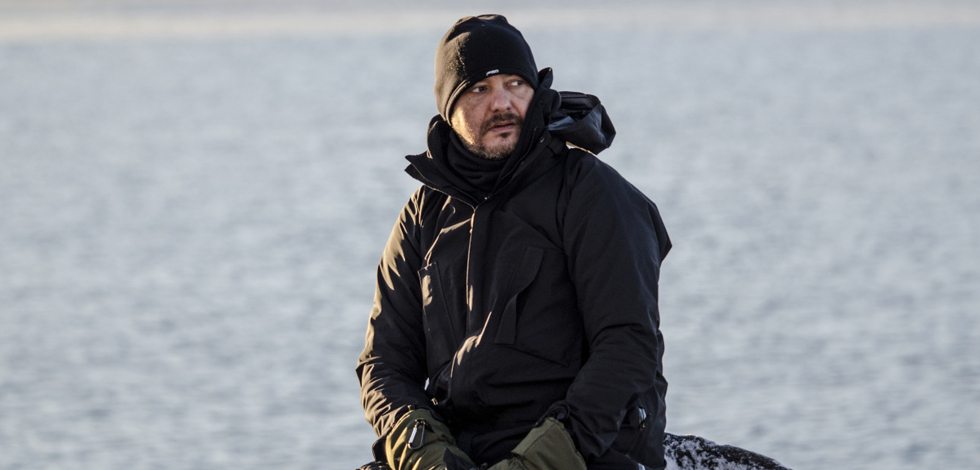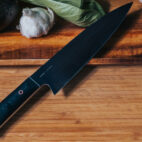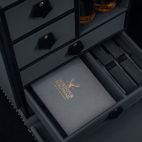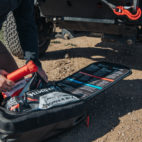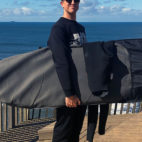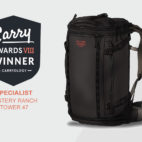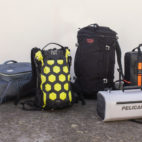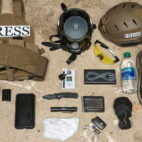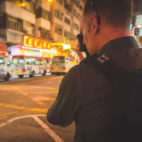Specialist Carry :: Expedition Documentarian
As a 43-year-old martial arts student, an artist well versed in film, photography, and sculpture, and a PhD candidate researching art and anthropology, Benjamin Pothier’s skills and curiosity have pushed him to some of the most extreme environments on our planet. His research, the core of which is “an anthropological question related to art,” has taken Pothier to the cusp of the Arctic Circle, the highest glaciers on the planet, and into the most unforgiving deserts in search of Martian landscapes here on Earth. As a researcher and talented documentarian, he’s been awarded a myriad of grants to pursue his own anthropological studies and record the work and research of others, most recently on his M.A.A.R.S. expedition to the Atacama with famed glaciologist and astronaut candidate Dr. Ulyana Nadia Horodyskyj, founder of Science in the Wild.
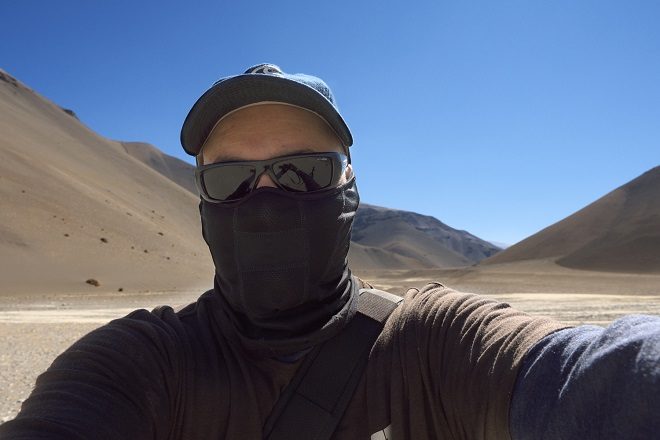
Pothier’s adventures dictate some very specific carry. He was kind enough to speak to us about his work, the psychology behind his carry, and how his preparation affects his final product.
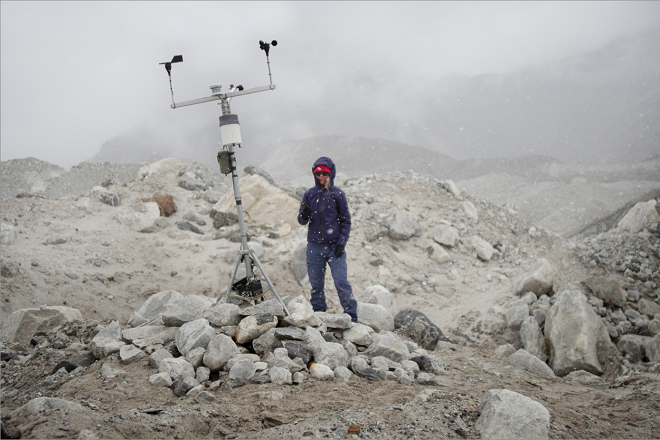
I understand you recently arrived back from the Atacama, the most similar environment to Mars on the planet?
Yes, exactly. I got back in February. It was terrific because all the people involved were really awesome people: gentlemen and professionals. It was pretty awesome. The team was already acclimated to high altitude because they had just arrived from Aconcagua in Argentina, so they went quite quickly, and I basically almost lost my right eye because a blood vessel exploded – I’m totally fine now and I can talk about it with a smile, you know? That was unexpected stuff, but apart from that, it’s always pretty challenging. In 2016, I went up to 5,500 meters, and at that altitude even the Sherpas tend to be exhausted quickly.
Yeah man, that’s up there. This was in the Himalayas, I take it?
Yes, and for this recent trip to the Atacama, we went up 5,837 meters. You know the highest mountain in France? Mount Blanc? It’s 4,000 meters high. In my childhood, I did some mountaineering practice and I have some experience, but I’m definitely not a climber.
At least with your glacial travel, when you went to the Himalayas, I imagine you were roped in?
The fact is, a big part of the glacier, a way we can imagine it, in fact it’s not ice covered. The Ngozumpa Glacier is much more like walking on the moon. It looks like an open mine. It’s a really destroyed environment – it’s pretty amazing – straight from a Star Trek movie, you know?
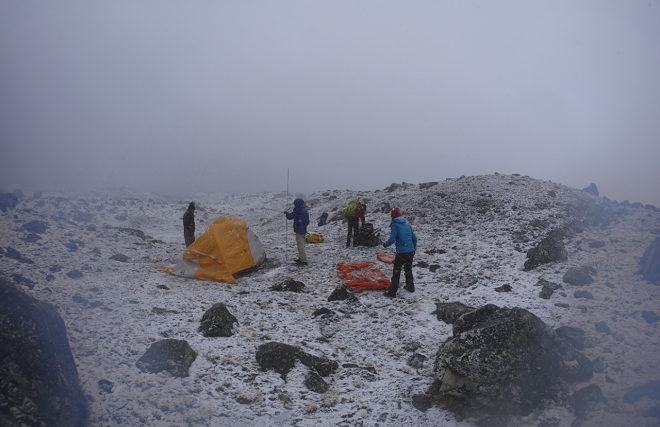
So in talking about your expeditions, Carryology is very much bag-centric and we’re very interested in the work you’ve done with bagjack and we’ll get to that in a little bit, but let’s start with your standard expedition load. What does that look like for you? Can you give me a rundown of your loadout?
An average loadout for my bags…I think it was 2014 I tended to have two different bags and one carry-on one with all my photography equipment. I trained as a first responder to feel more prepared for my expeditions, so I tend to pack my own med kit, as well as doing sub-packing the way first responders do it. I think I still take too much clothing honestly, and I try to take less when I go.
“For me it’s a bit like professional snowboarders, they meditate before they do their descent and they visualize what they are going to do…”
Do you have a check list?
Yes, actually. Before I started to go on expeditions with Dr. Ulyana Nadia Horodyskyj, I tended to make my own check lists, but for the past two expeditions I’ve relied mostly on Dr. Horodyskyj’s check lists. I have it right in front of me, from medical to practical to personal to clothing, sleeping, climbing – they break it down by activity.
I was reading some of your other interviews and I read that you enjoy that mental state of preparedness—you try to be prepared.
For me it’s a bit like professional snowboarders, they meditate before they do their descent and they visualize what they are going to do. For me, the preparation the month and the week before departure—I’m at that place where I start to visualize what I plan to do: what kind of image I plan to record or direct. So, for me, it’s pretty close to meditation. It’s like making a mandala to prepare your mind. You want to have everything neatly folded and not bring too much gear. You think like, “Oh, maybe I don’t need these pants, because I can just bring that base layer.” Things like this, you know? I also practice sculpture, and for me it’s very close to the mental approach I take when I prepare my bags. It’s a ritual. It’s a meditation.
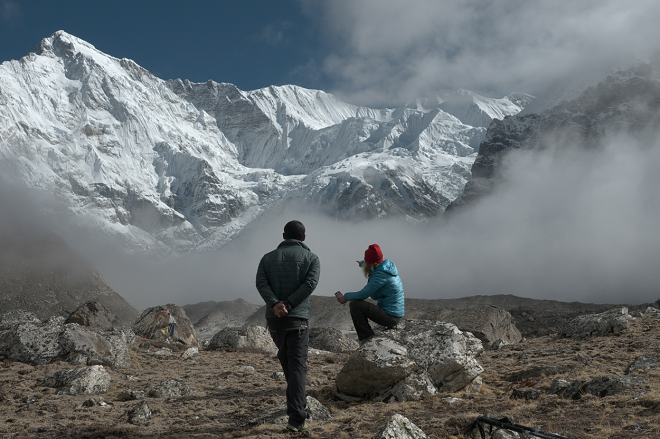
Absolutely! The ritual aspect of it for me is certainly true. And it’s really interesting that you say that in sculpture, that’s a really wonderful metaphor for that actually. The visualization of what your objective is, or what your mission is, and then working that in reverse to understand what you’ll need—I can appreciate that.
You’re obviously a man of many hats. You’ve studied martial arts, you’re a first responder, anthropologist, artist, photographer, videographer…if you had to summarize your work, in just a few lines – what is it that you do in the most boiled down sense?
I talked with an artist yesterday, and I told her that in a way, what I try to do is experience – to engage in as many life experiences as I can nowadays: to do different kinds of jobs. I don’t think [my work] amounts to the end result of one particular job. I’m not so good at short sentences about my research and work because it’s pretty multi-disciplinary as you said. For example, while training as a first responder, I learned there are many ways to pack my bags…but it also has an influence on the way I make sculpture. I think you take perspective on your work by doing other research, completing different kinds of work, meeting different people from different scenes and universes, and then you come back home with new skills. That’s my opinion.
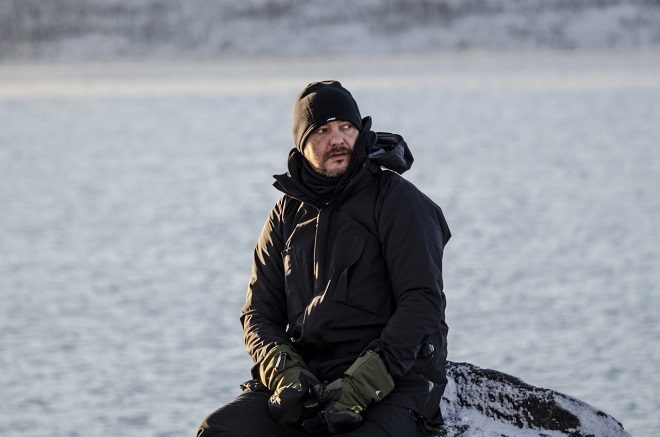
You can say I’m a multi-disciplinary artist and researcher to be very short about my work.
Hah! I like the longer explanation.
Yeah, ha-ha sorry.
Back to that mental state of preparedness that we were kind of touching on, I read in an interview that you had a photography drill that you used in the Arctic Expeditionary residency. That’s really interesting. Have you developed any other drills that you’ve used recently?
For the Atacama Expedition, I was hired by a production company to make a 360-degree movie about the expedition. I talked with them and we developed drills for use with the 360-degree cameras.
Did you use those drills for your own work or did you teach those drills to other videographers?
No, no. I use them for my own work—
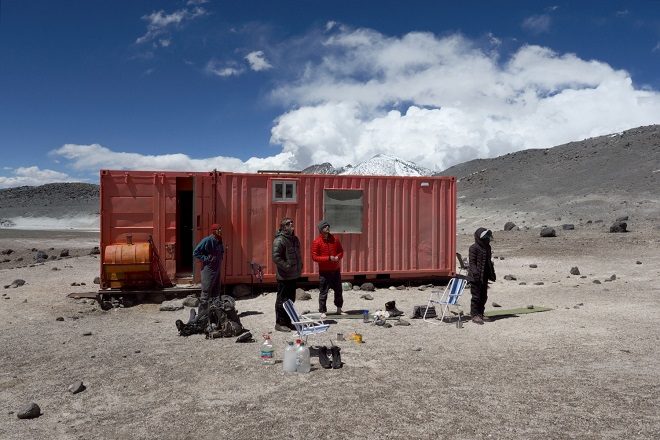
“For me it all comes from my interest in mediation and Japanese culture… I like sometimes to push myself a little bit.”
Can you tell me more about that?
One good example is when I first got a GoPro in 2013. I started to use it and I realized that plastic cap to the USB port was kind of difficult to remove. Very quickly, I thought I might lose that part during the expedition, so every time I used that GoPro, I started to always put that specific plastic part in a specific place on the plastic cover when I opened it. I repeated the action almost every day before departure. The way I use almost all of my equipment is based on that kind of approach.
Very systematic.
Yes, exactly. I tend to be – it might sound a bit surprising – but, I tend to be very chaotic. I enjoy Jackson Pollock paintings. For me to become professional, I thought I had to become very precise in my end use of equipment. One aspect of my artistic background that brought me to that is my training in etching. I studied prints and etching when I was 18. In etching you use acid, and you have to carve, and you have to be very precise – very proper – if you want to have good results. So that’s my mindset for almost every professional endeavor.
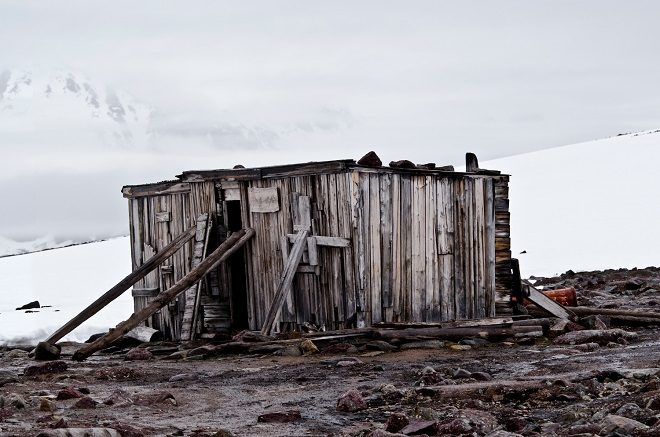
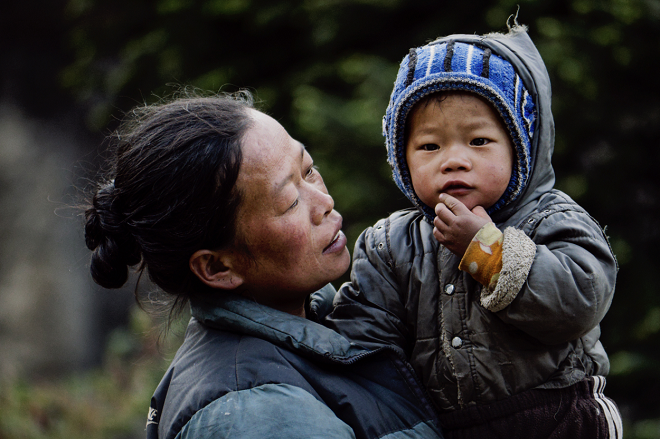
That’s interesting. As an artist, you know, I would think that you would act on emotion or on intuition or on feeling, and it seems like there’s – at least in your preparation, it’s very mechanical.
Yeah, totally. But I can add something to that. I have too much emotion—intuition—and so I have to work on the other side. I would say something like this. I’m 43 now, so I have very easy access to my emotions and I have pretty good intuition I think, so I work on the other aspects.
You’ve been studying martial arts for 15 years – I read that at some point your interest in martial arts and preparedness led to your curiosity in everyday carry. Was there a specific event that sparked your interest? How did you get into everyday carry?
Specifically, for everyday carry, it was like eight years ago. When I started to do martial arts self defense training – it’s the place where I gain self-discipline. And there’s a certain way to prepare, so perhaps there’s similarities there.
Do you meditate?
Yes. Daily. I helped to build one of the only Zen monasteries in France. I went as a benevolent to help build it.
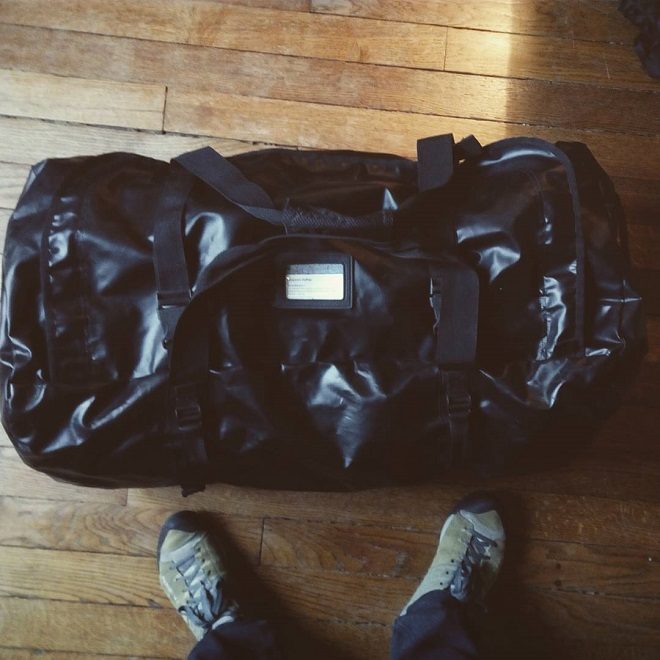
Let’s talk about bags for a second. What makes an excellent expedition bag for you? What are you looking for?
I’m looking for a hard fabric first. Waterproof? Yeah, definitely. I mean, you know, one of my first expeditions was on a boat, so I look definitely for waterproof bags. For the arctic expedition, I used a duffle from Fourth Element. It’s a diving bag basically. I have a huge collection of hard cases also. Usually, I’m in economy class so I have to think about the weight of the bag. So, I’m limited on that. I use an electronic scale and two weeks before departure I’m weighing my bags.
In terms of the great bags, what can I say…definitely the fabric. I’m more and more looking into stuff like Dyneema or Kevlar. Dyneema is pretty exciting. Apart from bagjack, I don’t own many, but I’ve been quite impressed by f-stop bags for photographers.
Is there any bag that you really want?
Yeah, f-stop makes some of my dream bags as a photographer. They look like impressive bags. I have a Lowepro photography/climbing bag that’s really cool, but it’s not waterproof, and I’ve been looking for a waterproof bag for photography.
As a side note, I would say that all this state-of-mind I’m talking about, from preparedness to self-discipline and things like that, I think in the end it has an impact on the quality of my photography. When I am in the field, I want to have access to maybe not 100% but maybe 90% of my photography skills – all the preparation before departure, the way I’m packing my bag, the way I’m thinking about gear, the way I feel in my equipment: everything changes my experience, and I think it has an impact on my artistic production.
That’s interesting: that a photograph, which is just a piece, a moment, has all that work in front of it and you’re including packing, you’re including the preparation, you’re including the gear selection in this piece of work in that one moment.
I mean definitely, because you know when you are on a mountain, if you open a bag which is neat, which is nicely packed you get that feeling of being focused and being prepared.
Re: Photo of his loadout.
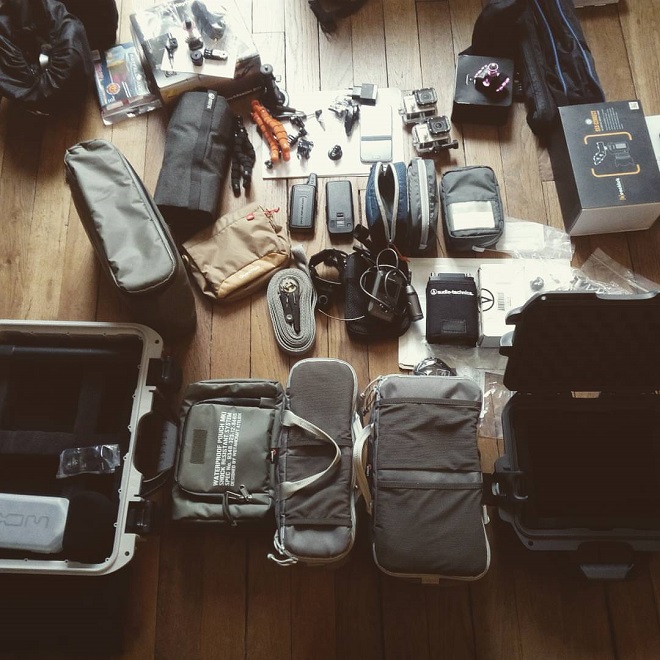
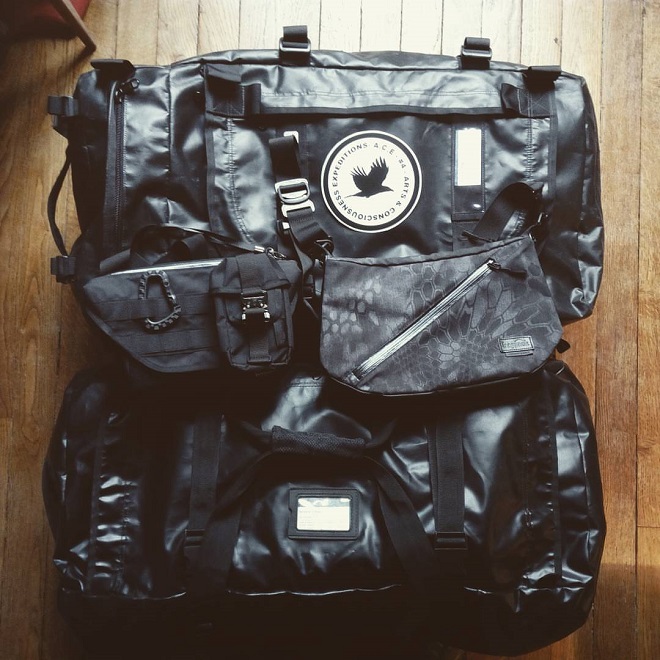
The big duffel comes from Nargear. I did extensive research with an academic mindset to find the best gear for expeditions.
Hah! How’d you do?
The PhD mindset brings you to research – so Nargear, they make firefighter backpacks and they also do duffel bags. I thought that’s probably the best duffel bag I can find. In 2005 I was supposed to go to Everest base camp. I was a technical advisor for an expedition and I contacted them and they sent me that duffel bag. I was also pretty happy to support people coming from the firefighters’ community.
“I started to walk one piece of luggage like 25 meters ahead and then I walked back to get another piece…”
What’s the single strap bag on top there?
That’s a Sniper Bag from bagjack. I was lucky enough to get one before they released it, because I’m in some closed discussion with the bagjack team. I honestly love that bag. It’s pretty neat. It’s very – how can I say – it’s still a man bag. It’s super practical. It can be very useful in the field and when you use it reverse it looks neat. Paris subway, going to a show opening – when you turn it, the other side looks pretty clean and civilian.
What’s your capacity with bagjack? What role do you play?
I’m not part of the company. In 2016 we got in contact together because I have collaborated with other people who know my work. We started to design a bag prototype which was based on one of their existing models, the Sputnik bag. That bag is pretty neat. You can make it bigger or smaller…you can fit a DSLR in it. What I did was to propose a technical evaluation to the bag and introduce specific features for my own use in Nepal and tested again in the Atacama. We wanted to release it as a hybrid product between art and bag design. We plan to release a limited run, maybe ten, with some specific features in the bag because I kind of curated EDC objects that fit perfectly in the bag and with each bag should come stone samples that I brought back from the expeditions.
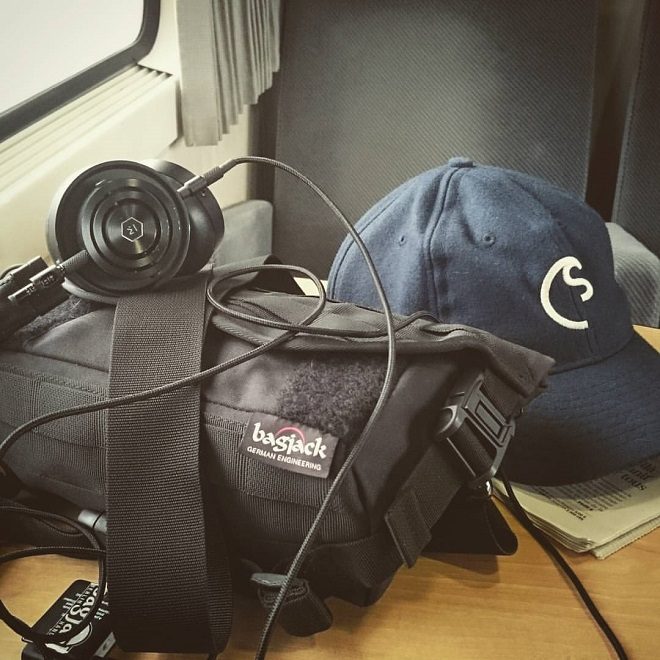
We used the Internet and we exchanged design ideas and I sent them sketches – I think four months before departure to make a proposal for this specific bag.
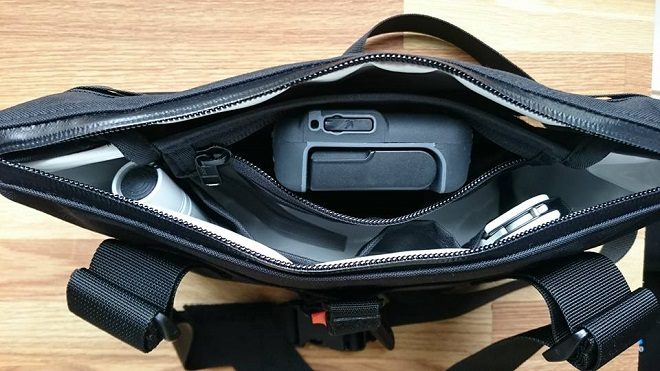
And they ended up creating this bag based on your specific proposal?
Exactly, yes. They proposed Fidlock, for example, which I did not know at the time, but are very cool. It terms of user experience, they are very fulfilling. I also designed a kind of specific part for long-haul flights. It’s a kind of lanyard you hang on the seat in front of you on the plane.
Anyway, I hope to see the final product soon, because we still want to test new fabric for the final run.
On Carry and EDC: For me it’s a subject I really enjoy. It’s a cross between artistic and academic research. I started to get into the tech-wear movement when I started going on expeditions. I started to look for the best gear, the best fabrics, and I immersed myself in the tech-wear community. From base layers, to outerwear, to bags and shoes.
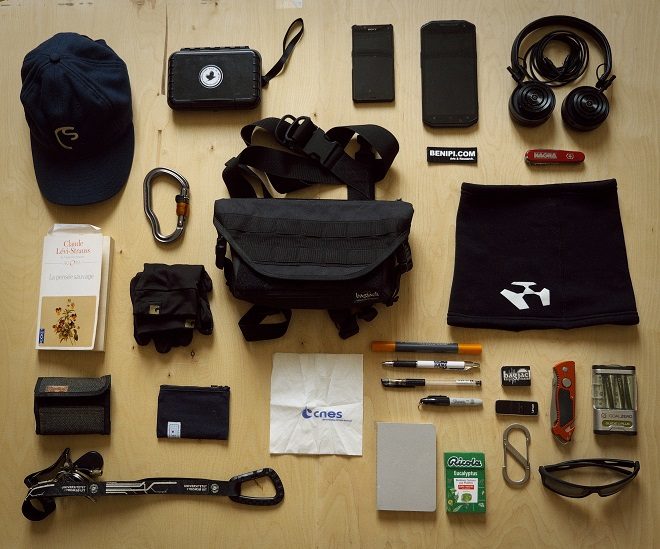
I think it’s a real expression of identity, ya know? What and how we carry the things we carry. If you have a person or a consumer who is very acutely aware of what that says, I mean you can really make big statements with bags and with carry – it’s very, very detailed.
Exactly. Exactly. I think it’s in a way of course you have the practical aspects, and it’s useful, but it’s also a bit like selecting your avatar, or profile picture on Facebook. It’s like your profile picture – your everyday carry.
In the ancient times people used to carve wooden bowls…tools…things like this. Now, few people do that anymore, but when you select the specific tools that you carry every day, it’s like curating something for yourself. It’s a way to enhance your own embodiment – your own psyche.
“I’m working with an artist based in the Netherlands who is doing space art and we are going to send a photograph from the Mars Curiosity Rover test site to the moon through a radio telescope”
Haha! Yes, that’s definitely on the higher end of thinking about it for sure. Carryology has what’s called my #MyCarryID, which is a knolling of all the things that you carry – and no two photos are the same, much the same as no two people.
While we’re on carry, I’m going to ask you about hacks, tips, and advice. You’ve worked in some really harsh environments, have you learned any lessons, like the hard way while out on your expeditions?
Regarding the hard way, not with the gear but in my personal experiences. With gear I’m quite precise – I don’t think I’ve broken anything in the past ten years. I don’t break stuff because I’m super cautious. In 2014, I had like four bags on my way to the Kilpisjärvi research station. I had like 90-something kilos of equipment in two duffle bags and two large pieces of luggage. I was supposed to stay one month at the station. I had a drone in a specific case. I also had a bunch of high-quality audio equipment. I was supposed to meet a taxi at the Norwegian/Finnish border and it was supposed to bring me to the station. The fact is that the bus driver didn’t drop me at the correct bus stop, and I had no way to make a phone call. I suddenly realized I was in the middle of nowhere with my 90-something kilos of gear somewhere in the mountains between Norway and Finland.
“To take a good picture of a landscape you have to feel it – you have to feel the landscape, and you have to experience it in a way that is not grabbing your pictures and getting away – no. You have to communicate with the landscape.”
What did you do?
I started to walk one piece of luggage like 25 meters ahead and then I walked back to get another piece – you know what I mean? I did that for like 35-40 minutes until I was able to reach a group of houses, and I got lucky enough to stumble on a tourist resort that was nearly empty because it was near the polar night, so not really peak season. I got the phone of the taxi, and I was able to call him to come get me and my gear, but the fact is that I had like 15,000 euros of cinematic equipment with me in the middle of nowhere–
You know going back every 25 meters over like 3-4 kilometers, you can imagine how much farther that was. It was the only way to do it, though.
One thing I want to know more about is your artwork. You create these collections that emphasize certain social and environmental issues, especially with the weather trends and the climate trends that we’re experiencing in these really remote locations. Can you tell me a little about your inspiration as an artist, why you chose film and videography as a medium, and why you chose these really extreme locations to document?
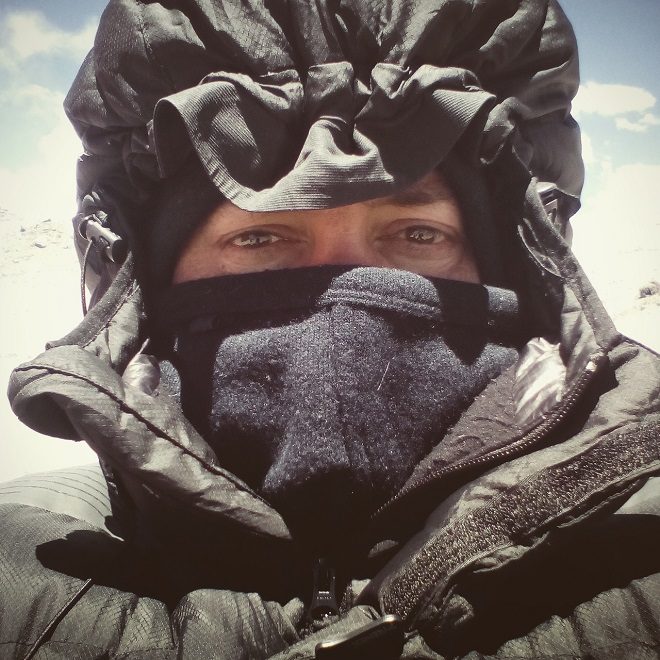
It might sound amazing, but one of the artists who influenced my work is an American poet named Gary Snyder. He’s an anthropologist and a friend of Jack Kerouac. He studied Zen Buddhism and is famous for being one of the grandfathers of bioregionalism.
There is that approach which connects to the experience of nature and the wild and meditation and the respect of the indigenous people’s knowledge and the knowledge of people who use their hands to make a living. Photography is as much an art as a craft. A lot of photographers are interested in meditation. To take a good picture of a landscape you have to feel it – you have to feel the landscape, and you have to experience it in a way that is not grabbing your pictures and getting away – no. You have to communicate with the landscape. All the other pursuits – understanding the anthropological aspects, knowing the geology of the place – I take all of this into consideration when I make pictures. Going to extreme places – I think my senses…I think I’m much more aware of the…of maybe the brevity of life. You know when you risk your life a little bit, the photographs you take will be much more intense. Every time I am about to go on an expedition to experience nature, it’s like a communion, you know? It’s almost a spiritual experience. I don’t feel myself as a tourist. I respect the place, I respect the people. When I was in Nepal, I had close discussion and friendship with the Sherpas, because I wasn’t just a tourist. I was there to help scientists conduct research to protect the area from flood and climate change.
** The Ngozumpa Glacier starts at the foot of Cho Oyu, the sixth tallest mountain in the world, and has melted rapidly in recent years. The melting water pools into a lake, called Spillway, which will continue to grow if the melting doesn’t slow and could threaten local Sherpa villages down the valley in the future. **
What future projects are you working toward?
I’m working with an artist based in the Netherlands who is doing space art and we are going to send a photograph from the Mars Curiosity Rover test site to the moon through a radio telescope, and then, another radio telescope on earth is going to receive the image. This artist invented a software that makes it possible to send images as radio waves through radio telescopes. The radio waves are bounced off the surface of the moon and then reflected back to Earth. I find it pretty amazing to engage in a collaborative project to those ends. When the radio waves come back, the image will be distorted because the surface of the moon and the soil is not neat, so the result I think is going to be pretty amazing. We plan to exhibit the first image we send beside the one coming back near some stone samples I brought back from the test site.
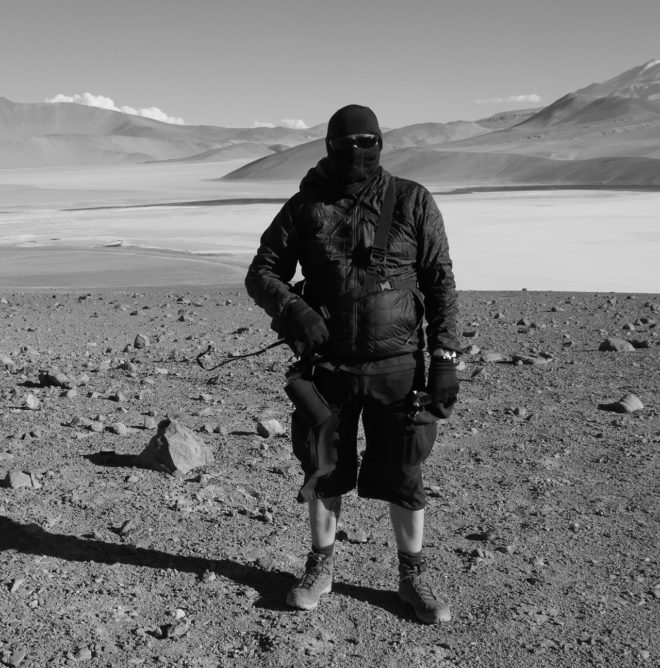
What do you think it’ll look like?
It will bring a specific feeling – it’s a really postmodern idea. We went to the Atacama for Mars analogue training with a group of astronaut candidates, and now these images are really going to space and coming back. It’s a really interesting way to engage with art and production.
Pothier wants to continue to collaborate with brands and artists as it relates to his art and anthropological studies. He spoke at the Earth Without Humans II International Symposium at Kapelica Gallery in partnership with Ars Electronica from Linz and others together with the European Space Agency and European Southern Observatory. The symposium featured other prominent figures in the space community from NASA, SETI, and ESA just to name a few. To reach out to Pothier and find out more about his pursuits check out his Facebook and Instagram profiles.
*If you dug this article, you might dig these too!
Specialist Carry :: War Journalist
Specialist Carry :: Firefighter
Specialist Carry :: Storm Chaser





 Carry Awards
Carry Awards Insights
Insights Liking
Liking Projects
Projects Interviews
Interviews
